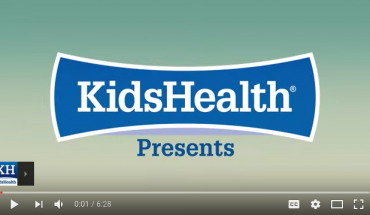Teen boys with hypertension on the rise: Ahead of World Hypertension Day on 17 May, MedUni Vienna is raising awareness about the growing number of children and adolescents with high blood pressure. Unhealthy levels are increasing globally, especially during puberty, with boys affected three to four times more frequently than girls: around 20% of male adolescents have elevated blood pressure. Main causes of primary hypertension (= hypertension not triggered by another disease) in young people are obesity and lack of exercise, but increasingly also chronic psychological stress.
Based on scientific data, a main reason for the increasing health risk in young people is obesity: while primary hypertension is found in 1.4% of normal-weight adolescents and 7.1% of overweight adolescents, the percentage rises to 25% in obese adolescents. “Increased waist circumference presenting the abdominal fat in particular, is associated with high blood pressure and early onset of cardiovascular diseases,” reports Susanne Greber-Platzer, Head of the Department of Pediatrics and Adolescent Medicine at MedUni Vienna.
Anxiety, pressure and stress
Lack of exercise, in turn, leads to a threefold increase in the risk of hypertension. Chronic exposure to anxiety, pressure and stress is also increasing in children and adolescents, with significant effects on their health and blood pressure. Additionally sugary drinks and salty foods are directly affecting the blood pressure. Rapid growing during puberty, especially in boys, often leads to pathological blood pressure values. Prematurity, low birth weight and genetic predisposition may also play a role.
Dangerous hypertensive crises
Factors such as age, gender and height must be taken into account when measuring hypertension in children under 15 years-of-age. For adolescents aged 16 and older, a blood pressure above 140/90 is considered as hypertensive after three independent measurements, the same as in adults. Like adults, children and adolescents do not notice high blood pressure, therefore early diagnosis is challenging. General symptoms like headache, dizziness or nosebleeding can occur, but are not necessarily present. Hypertensive crises, markedly elevated systolic blood pressure values, can lead to confusion and seizures and even unconsciousness, presenting life threatening situations.
High risk for early onset of cardiovascular diseases
Long-term high blood pressure leads to left ventricular hypertrophy and endothelial damage of the arterial vessels including coronary arteries, consequently increasing the risk for premature myocardial infarction or stroke, even in young adulthood. “To prevent the risk of early cardiovascular damage, a screening from the age of three years would be necessary,” says Susanne Greber-Platzer, emphasizing the importance of measuring blood pressure in children and adolescents at least every two years. Therefore, a healthy lifestyle should be forced and additional medication to lower the blood pressure can be indicated in childhood to prevent early cardiovascular damage.
If hypertension is caused by other diseases (secondary hypertension), it is necessary to treat the primary disease appropriately and enabling blood pressure reduction. For example, Diabetes mellitus Type I causes high blood pressure in about 15%, which frequently manifests in childhood or adolescence.
- New lipid-based pathway discovered as key to memory formation - 25th June 2025
- Crucial link could explain how Alzheimer’s takes hold - 25th June 2025
- Understanding Your Mind Can Improve Daily Life - 25th June 2025







